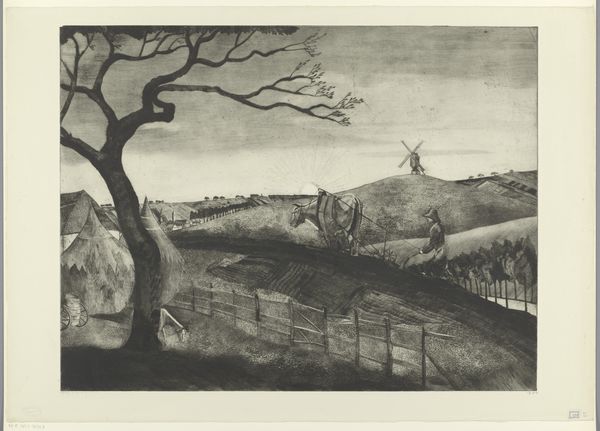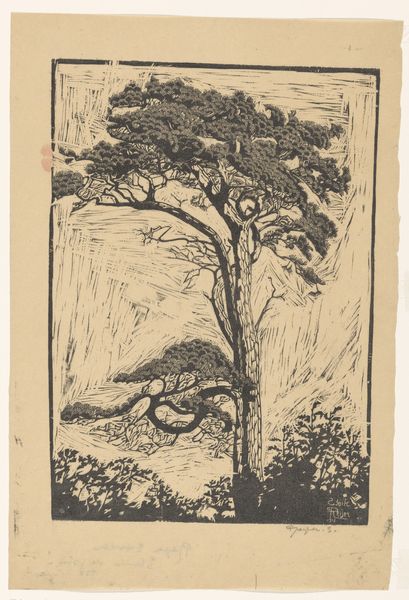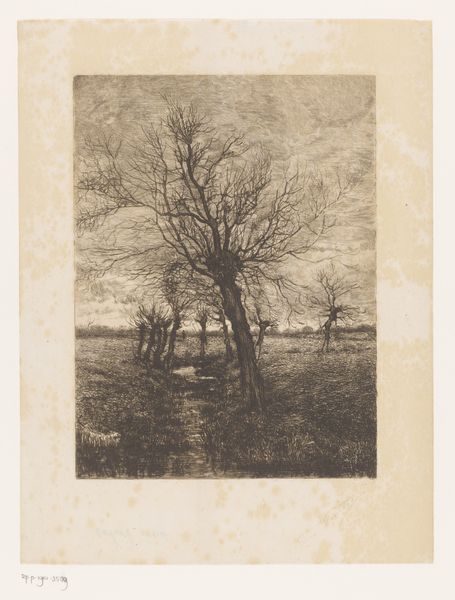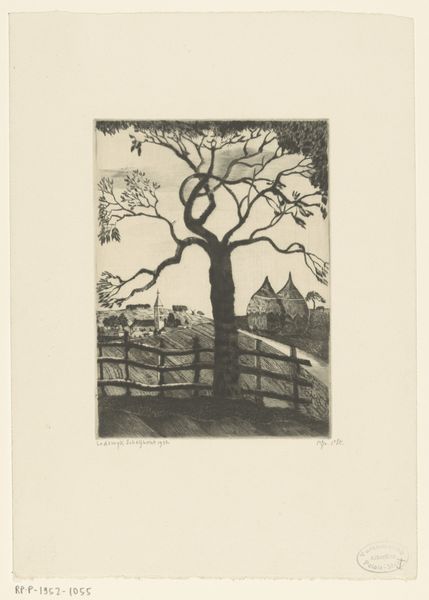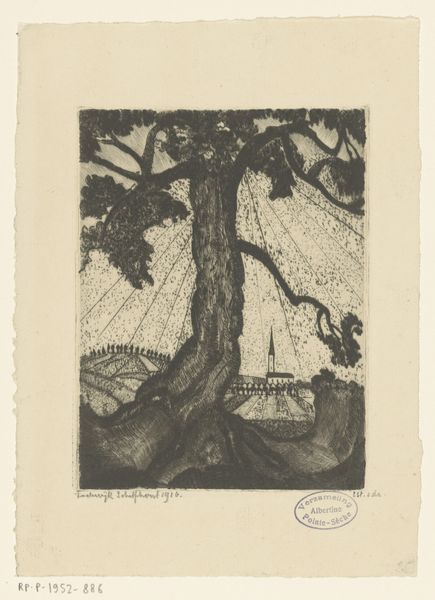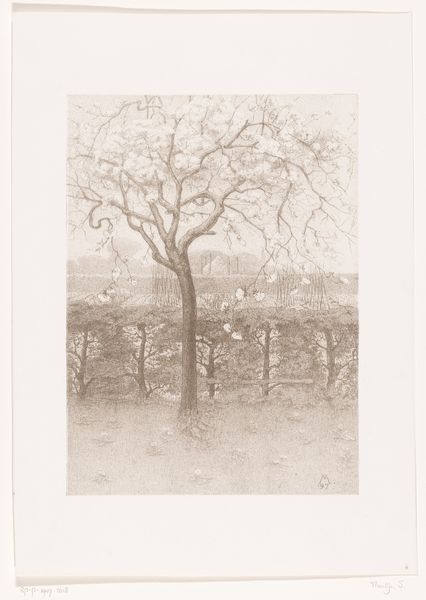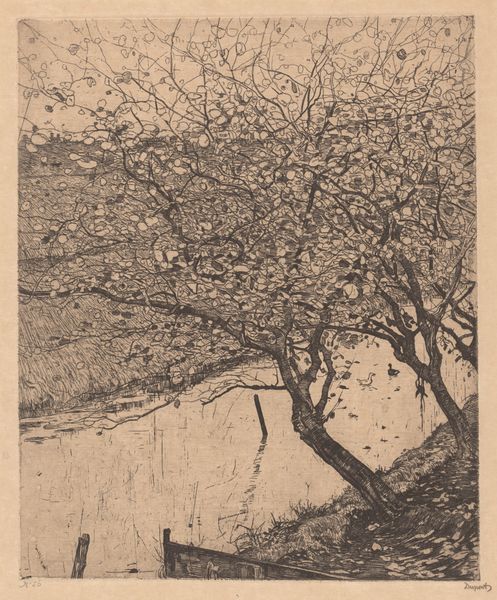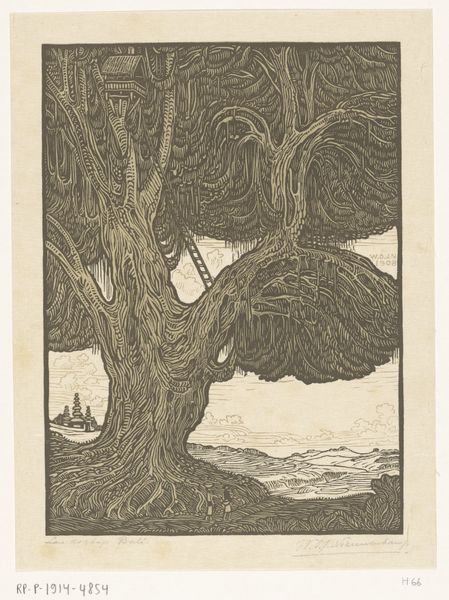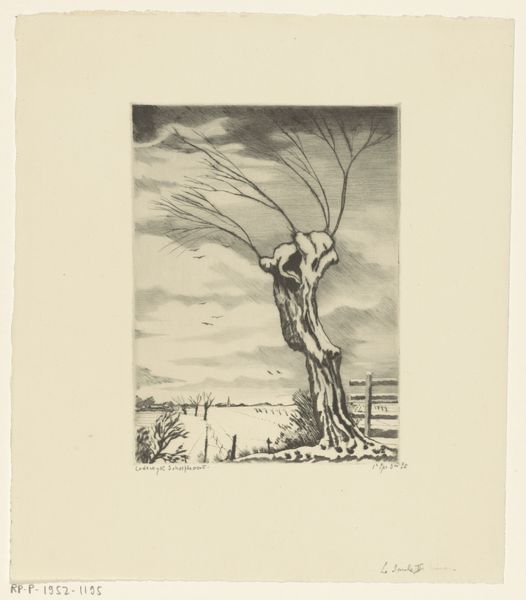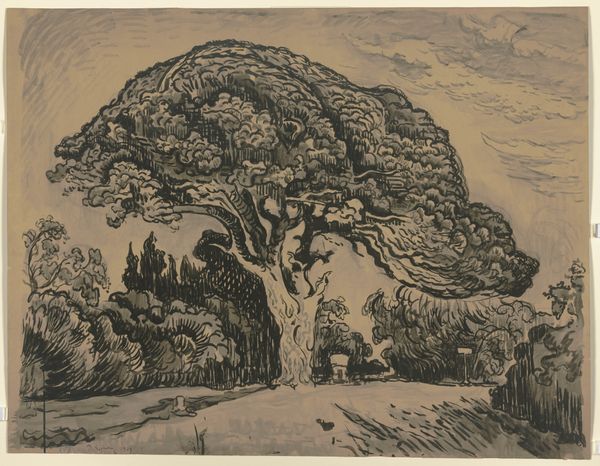
print, etching, paper
#
tree
#
pale palette
# print
#
etching
#
landscape
#
paper
#
horse
#
realism
Dimensions: height 645 mm, width 495 mm
Copyright: Rijks Museum: Open Domain
Curator: Looking at Lodewijk Schelfhout's 1926 etching, "Paard in een weiland bij Etikhove," which translates to "Horse in a meadow near Etikhove," the muted tones create a rather melancholic scene. Editor: Yes, I feel that. It's striking how the stark branches of the tree dominate the composition. You immediately see the textured strokes, how the etching process allowed for such fine detail, especially on the tree's bark and foliage. Curator: Absolutely. And consider how the artist chose to depict a horse in its work, because during this period the market for rural scenes, with livestock or agricultural workers became popular, indicating an interest in and idealization of simple, rural life among the middle class. The print offered accessibility to art ownership. Editor: That’s an interesting angle, but isn't it also about romanticizing nature and animal labor within specific economic structures? We're presented with what looks like an untouched pastoral landscape, yet its accessibility as a consumer good reveals a whole layer of economic implications related to leisure and ownership. Curator: Precisely. The Rijksmuseum being its current location underscores that. These works eventually get institutionalized. Editor: And thinking of materials, etching allowed for multiples, right? What impact did that have? It brings up the complex intersection of nature, labor, and access – what materials were required, and for whom were the products being made? The subject—the horse and pastoral scenes—reflect consumerism aimed at the upper middle class looking for country idylls. Curator: A valid question! This print acts almost as an artifact documenting societal interests in that moment and beyond. I find it captivating how the artistic choices were reflective of broader tastes and the growth of a particular kind of consumer. Editor: Agreed. Understanding how it moved from Schelfhout’s studio, to print shop, to market, to museum display… it really underscores the transformation art undergoes through social and economic channels. It is all about layers and how material culture influences cultural production, from the first incised line to its contemporary significance.
Comments
No comments
Be the first to comment and join the conversation on the ultimate creative platform.
